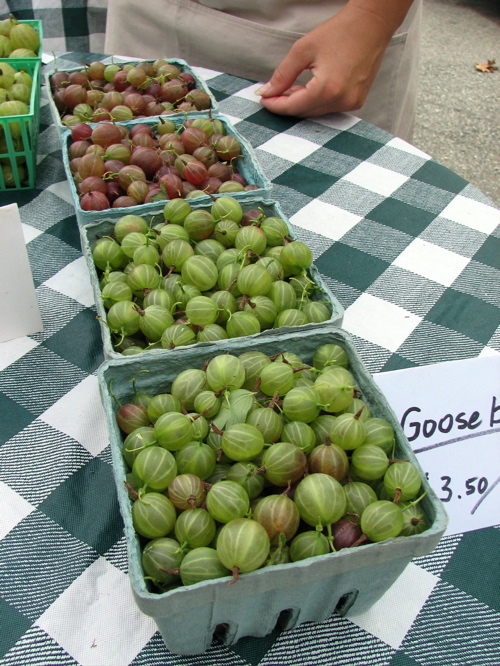A gooseberry typically tastes tart and slightly sweet. It can have a citrusy flavor with hints of grape or kiwi. The taste can vary depending on the variety and ripeness of the fruit.
Know More About what does a gooseberry taste like
Gooseberry Delight: A Flavorful Adventure
Tucked away in the realms of nature’s bounty lies a tiny treasure known as the gooseberry. This humble fruit, also referred to as the Ribes uva-crispa, is often overlooked, overshadowed by its more popular counterparts. Alas, the gooseberry remains a hidden gem waiting to be discovered by those willing to explore its unique and tantalizing taste.
At first glance, the gooseberry resembles a tiny green grape, its smooth skin glistening under the gentle sunlight. But make no mistake, as appearances can be deceiving. To truly understand the gooseberry, one must engage all senses and embark on a sensory journey beyond compare.
As the tart aroma wafts through the air, it tantalizes taste buds long before the fruit reaches your lips. The scent is vibrant and crisp, reminiscent of a summer breeze flowing through a countryside meadow. One can almost picture the lush green leaves swaying, carrying with them a sweet-tangy fragrance that lingers enticingly.
Upon taking that first bite, the gooseberry reveals its extraordinary flavor profile. As the flesh yields against your tongue, a burst of tangy acidity comes to life. It’s as if a choir deep within your taste buds sings in perfect harmony – a medley of tartness, brightness, and a hint of subtle sweetness. This symphony dances across your palate, leaving you wanting more.
With each subsequent bite, the complex layers of flavor unfold. The fruit’s acidity, akin to a perfectly balanced lemonade, evokes a refreshing zest. A subtle bitterness emerges, adding depth to the taste while remaining delicately grounded. Then, just as you begin to adjust to the tartness, a rush of sweetness cascades forth, providing a delightful relief that lingers pleasantly on the tongue.
The gooseberry’s unique flavor creates a culinary versatility that few other fruits possess. Its tartness gives it a distinct edge, making it an ideal partner in the art of cooking, baking, and mixology. Stewed and sweetened, the gooseberry transforms into a silky jam, perfect for spreading on freshly baked scones. In pies, tarts, or crumbles, it adds a delightful tang, perfectly balancing the sweetness of other fruits or custard fillings. Some even dare to pickle these precious gems, unlocking a whole new universe of taste exploration.
However, the gooseberry is not solely defined by its taste. Its texture, too, plays an important role in this sensory journey. With a delicate skin that holds a satisfying firmness, this small fruit engages the palate with a tender, luscious bite. The way it releases its juices as you chew creates a delightful sensation, a harmonious blend of flavors and textures that titillates the senses.
Furthermore, the benefits of the gooseberry extend beyond its wonderful taste. Loaded with essential vitamins, potent antioxidants, and a rich source of dietary fiber, this mystical fruit packs a powerful nutritional punch. Its anti-inflammatory properties and high vitamin C content contribute to overall immune support, making it a cherished addition to any healthy diet.
In conclusion, the gooseberry is an unsung hero of the fruit world. Its unique flavor, a captivating dance of tartness, sweetness, and brightness, delights the palate and sparks culinary creativity. Whether enjoyed raw, cooked, or transformed into delectable treats, this unassuming fruit is a gem waiting to be appreciated by discerning taste explorers. So, next time you come across a basket of these vibrant green marvels, be sure to allow yourself to indulge in a gooseberry delight; an experience that will leave you yearning for more.
FAQs on what does a gooseberry taste like
Q1: What does a gooseberry taste like?
A1: A gooseberry has a unique flavor that can be described as a mix of tart and slightly sweet.
Q2: Are gooseberries sweet or sour?
AA2: Gooseberries are generally more sour than sweet, although their taste can vary depending on the variety and ripeness.
Q3: Can you eat a gooseberry raw?
A3: Yes, gooseberries can be eaten raw. However, due to their tartness, some people prefer to consume them as part of a dish or in a cooked form.
Q4: How do I know if a gooseberry is ripe?
A4: Ripe gooseberries are usually plump and have a vibrant color, ranging from golden yellow to deep red or purple, depending on the variety.
Q5: Are gooseberries similar to grapes in taste?
A5: While gooseberries and grapes are both fruits, they have distinct flavors. Gooseberries have a more complex and tart taste compared to the sweet juiciness of grapes.
Q6: Can gooseberries be used in baking?
A6: Yes, gooseberries can be used in baking. They can add a tangy flavor to pies, tarts, crumbles, and other desserts.
Q7: Do gooseberries taste good in jams or jellies?
A7: Absolutely! Gooseberries are a popular choice for making jams and jellies due to their natural tartness, which adds a unique flavor to these preserves.
Q8: Are gooseberries a versatile ingredient?
A8: Yes, gooseberries are a versatile ingredient that can be used in both sweet and savory dishes. They can be incorporated into salads, sauces, chutneys, or even paired with meats like duck or chicken.
Q9: Are gooseberries commonly used in cocktails?
A9: Yes, gooseberries can be used as an ingredient in cocktails. Their tart taste adds a refreshing kick to various drink recipes, providing a unique flavor profile.
Q10: Can gooseberries be enjoyed on their own or paired with other fruits?
A10: Gooseberries can certainly be enjoyed on their own, as they offer a distinct and satisfying flavor. However, they can also be paired with other fruits like strawberries, apples, or rhubarb to create delicious and balanced flavor combinations.




Leave a Reply